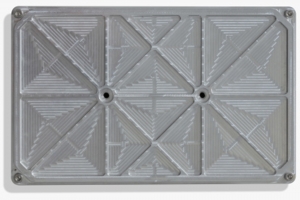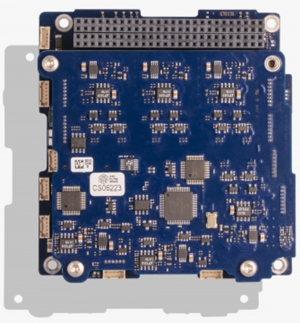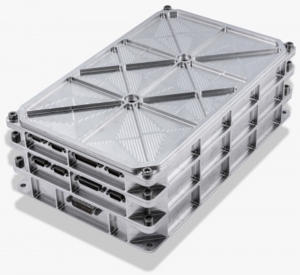Displaying items by tag: power conditioning
STARBUCK-MICRO - Power Conditioning & Distribution Units
The Starbuck-Micro PCDU (Power Conditioning and Distribution Unit) was initially developed under a Swedish national mission and tailored to the requirements of the LEO microsatellite bus InnoSat. This is a state-of-the-art spacecraft architecture designed for innovative low cost research missions. The flexible and modular PCDU is designed for mission life of up to five years in LEO and implements both power conditioning and distribution of the regulated 28 V battery bus, as well an auxiliary isolated 5 V bus. The rigorous testing and extended qualification campaign compliments an innovative design approach that combines COTS and radiation hardened components and optimizes the reliability and performance characteristics of the system.
The Starbuck-Micro design builds on heritage from previous missions with customers such as ESA, NASA, JAXA and other commercial organisations. A number of design features are implemented to achieve optimized reliability characteristics. For example, discrete bipolar design is used for many functions rather than integrated circuits, which enable a thorough part stress design analysis of the system to be performed. Internal supply voltages are current limited with automatic restart and the FPGA design features Triple-Modular-Redundancy (TMR). Worst case analysis, thermal and structural analysis are performed to verify the system functionality at its operational limits.
STARBUCK-NANO - Power Conditioning & Distribution Units
Designed to be robust and reliable with performance failsafes, the flight proven STARBUCK-NANO range are one of the most flown power system ranges in the world. The STARBUCK-NANO is designed to support 1U, 2U and 3U CubeSats with body-mounted solar panels. The STARBUCK-NANO PLUS features an extended number of Battery Charge Regulators (BCRs) to support high-power CubeSats, from 3U spacecraft with deployable panels, right up to high performance 12U missions. Each power generation section is self-sufficient and does not require support from any other section within the EPS, the redundant solid-state isolation switches make it more reliable during launch operations.
Employing Maximum Power Point Tracking enables a highly efficient battery charge mechanism, that maximizes the power generation from the CubeSat solar arrays. Analog components and multiple inbuilt protection methods are employed to ensure safe operation during transport, launch and a full range of EPS telemetry via the I2C network. These features make the STARBUCK-NANO range the most robust solution on the CubeSat market.
STARBUCK-MINI - Power Conditioning & Distribution Units
AAC Clyde Space’s small satellite PCDU (Power Conditioning and Distribution Unit) solutions have demonstrated impressive space-based capabilities stretching across a range of applications, gaining a market reputation for reliability, resiliency and performance. STARBUCK-MINI provides high power 28 V outputs and redundancy for power distribution, as well as redundant command and control interfaces via CAN or RS422. Its innovative design combines COTS and radiation hardened components to optimize the reliability and performance characteristics of the ITAR free system.
The STARBUCK-MINI adopts a modular design approach which enables easy customization. The adaptable system utilizes flexible add-ons to meet the required number of power output interfaces for payloads on each specific mission and can be quickly adapted to customer product specifications. Integration of interfaces for deployment mechanisms, magnetic torquers and other equipment can also be accommodated through the addition of custom modules.



